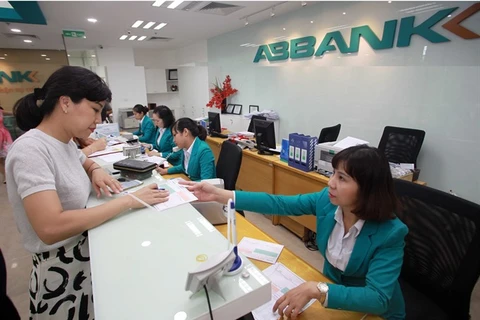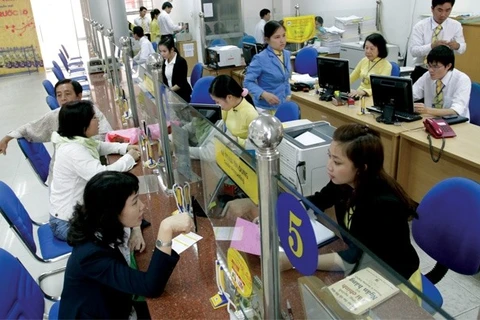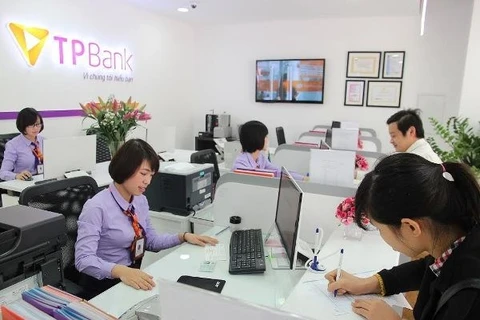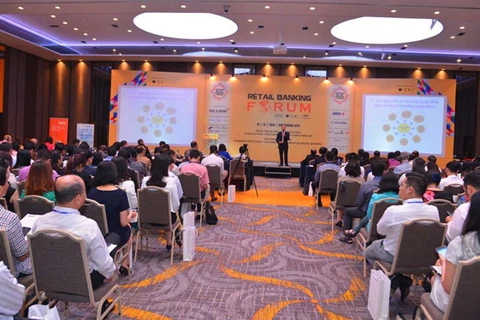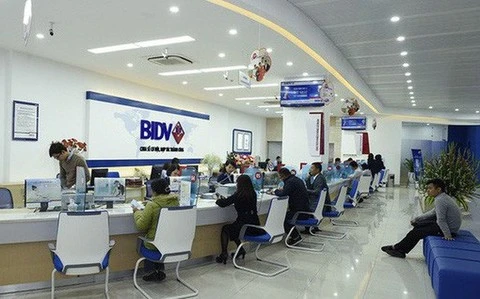 The current development and future strategies of many local commercial banks are creating confidence about a sustainable growth of the banking sector (Photo: Techcombank)
The current development and future strategies of many local commercial banks are creating confidence about a sustainable growth of the banking sector (Photo: Techcombank)Hanoi (VNA) - The current development and future strategies of many local commercial banks are creating confidence about a sustainable growth of the banking sector.
Recent assessments by international organisations have shown a bright picture about the performance of the banking sector, of which, leading credit organisations such as Vietinbank, Techcombank, Vietcombank and BIDV have resumed their momentum and shown good health.
The Asian Banker recently commented that the performance of Vietnam’s banking sector has continuously improved, thanks to the government’s reform efforts and the positive movement of the economy. The assessment is based on an analysis of operation and ranking of 16 Vietnamese banks, including state-owned banks and joint stock commercial ones.
According to the Asian Banker, Vietnam’s banking system has shown a positive performance, reflected in the country’s highest asset growth rate in the Asia Pacific region. In terms of profits, domestic banks have reached an impressive net profit growth of 37.4 percent.
Quite a number of recorded indicators have shown a positive development trend. For example, deposit/credit growth rate has boomed, reaching 1.5 times, compared to the same period, while credit growth has maintained at 18 percent. Though interest income still dominated, in the revenue structure of some banks, service fees increased significantly, to approximately 20 percent. Also thanks to good mobilisation and a positive improvement in the operation of businesses, partners of banks, the liquidity of the system has improved very well.
The Asian Banker appreciated bad debt settlement efforts, with the sub-prime debt ratio at just 2.5 percent at the end of 2016, the lowest level in recent years. The report also praised the increased risk management awareness of banks, which most clearly reflected in the compliance with new regulations of the State Bank, as well as Basel II standards.
[First Vietnamese bank completes Basel II project]
The Asian Banker has ranked 500 banks in the region with total assets of 224 billion USD, and a net profit of 1.6 billion USD. Notably, in terms of Strength Rank (the strongest banks following the asset balance sheet), the top 3 leading banks are Vietcombank (No. 48 out of 500 regional banks), Techcombank (No.101) and Vietinbank (No.124).
As such, Techcombank was the only joint stock commercial bank among the Top 3 banks with the highest profitability, following the assessment of The Asian Banker. This achievement was thanks to the fact that the bank had implemented good risk management measures, while having a good asset quality.
In September, the prestigious credit rating agency S&P also rated Vietcombank and Techcombank as equally as Vietnam’s national rating, or “national credit rating ceiling.” This is the highest rating that a Vietnamese bank can achieve (until S&P upgrades its credit rating for Vietnam).
According to S&P’s assessment, Techcombank has “a balanced choice between profit increase and risk management.” In 2017, Techcombank completed its bad debt purchase from the Vietnam Asset Management Company (VAMC) and started applying risk management framework under the Basel II international standard.
Assessing the move on bad debt purchase of banks, Pham The Anh, economic expert at the National University, told Dan Tri newspaper there were two noticeable points. First, the financial strength of banks allowed them to have abundant resources to acquire bad debt. Besides, the asset quality of loans had improved a lot (which may come from changes in the operation of businesses, in the bank’s accompanying policy and positive movement of the economy).
Expert Can Van Luc believed banks that really do business professionally and gain high credit scores from world prestigious rating institutions would maintain sustainable development and see good business results, taking advantage of opportunities when the economy integrates deeply into the region and the world. - VNA
VNA
